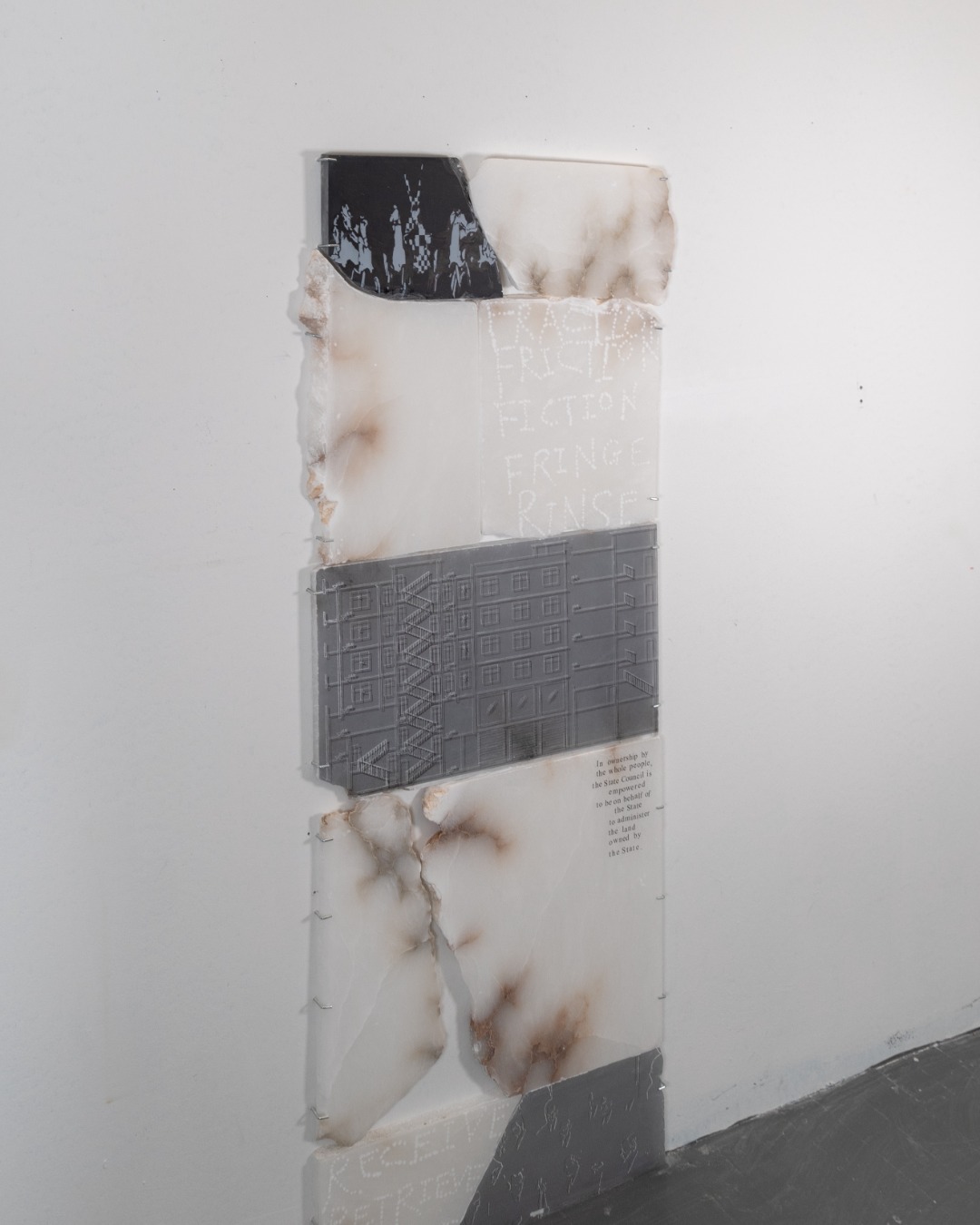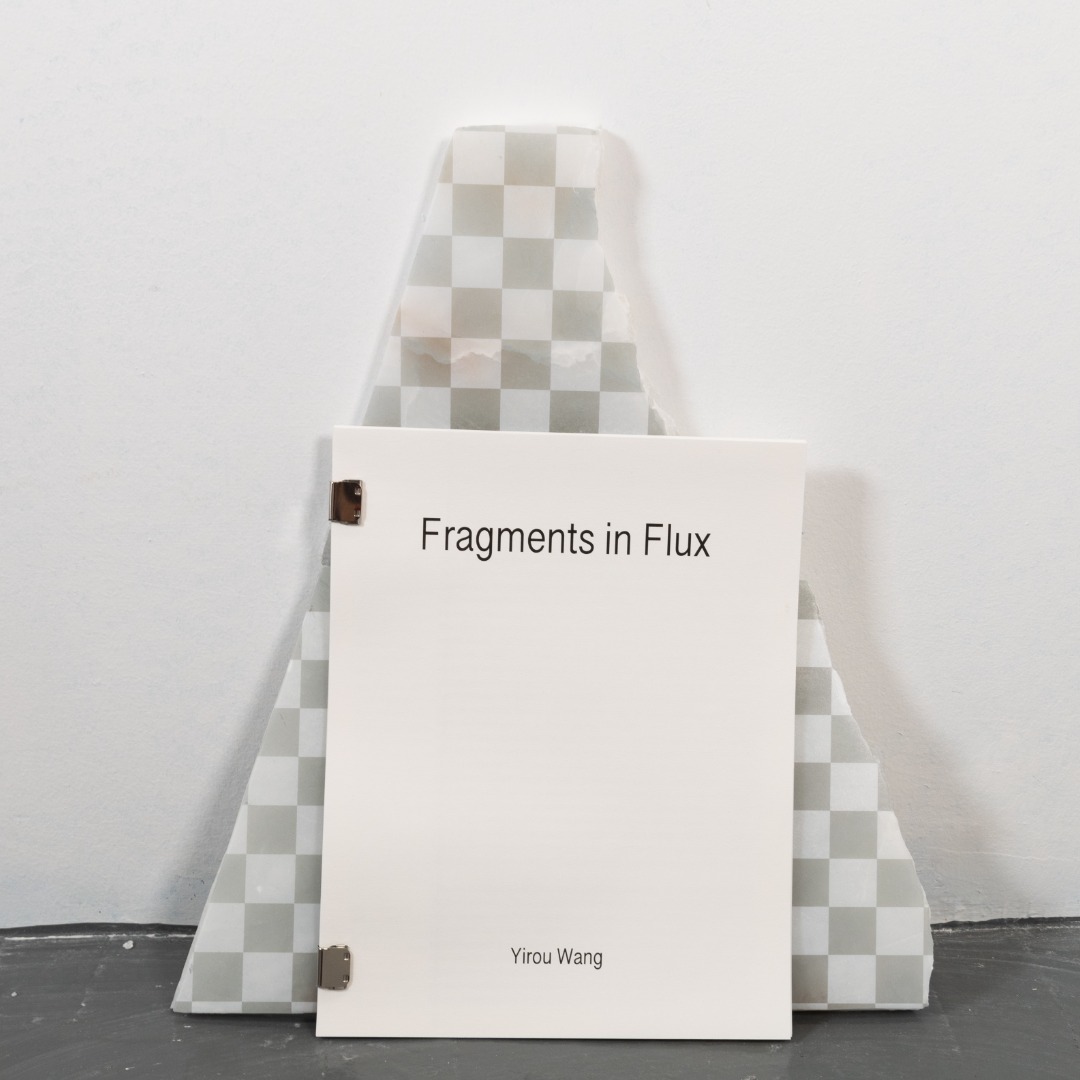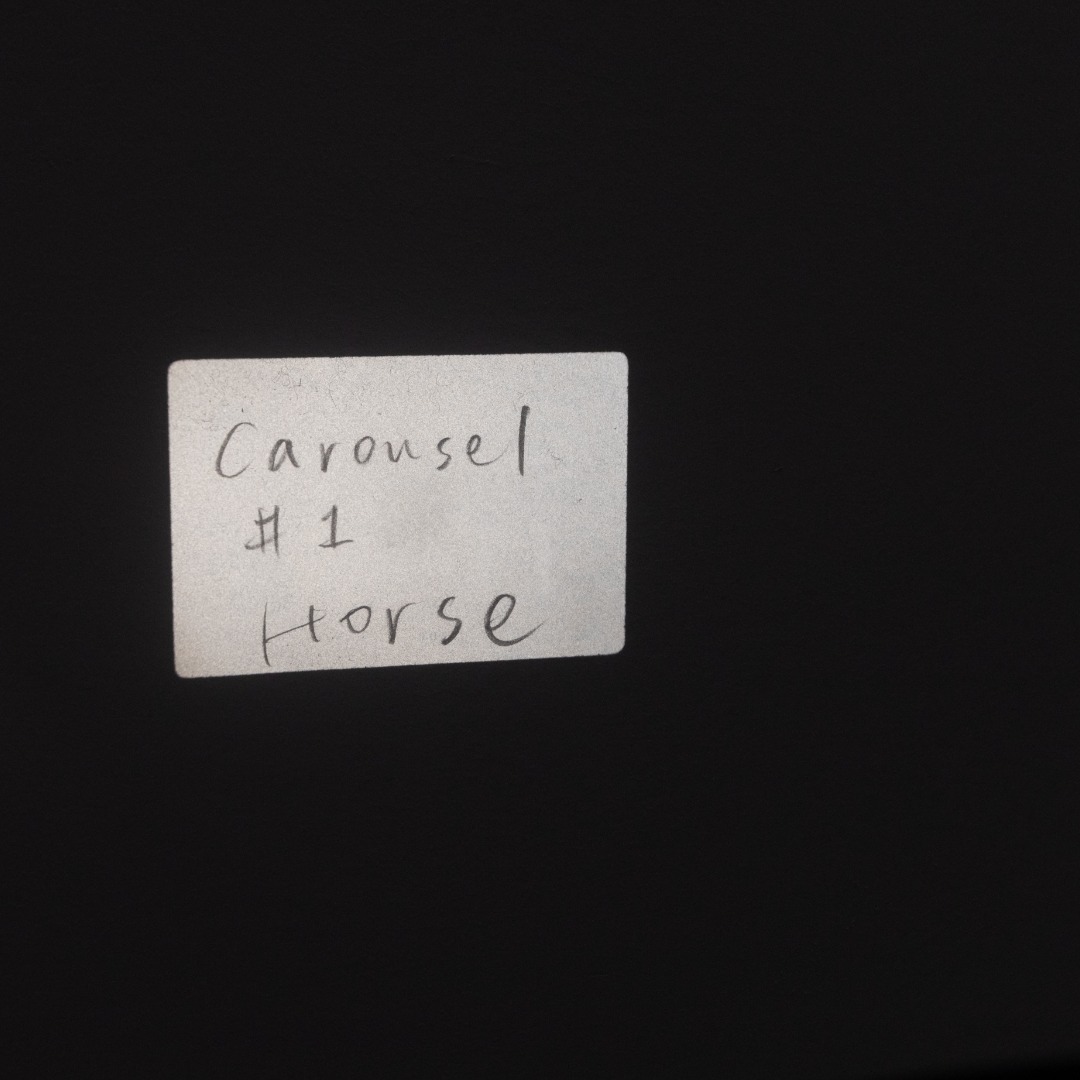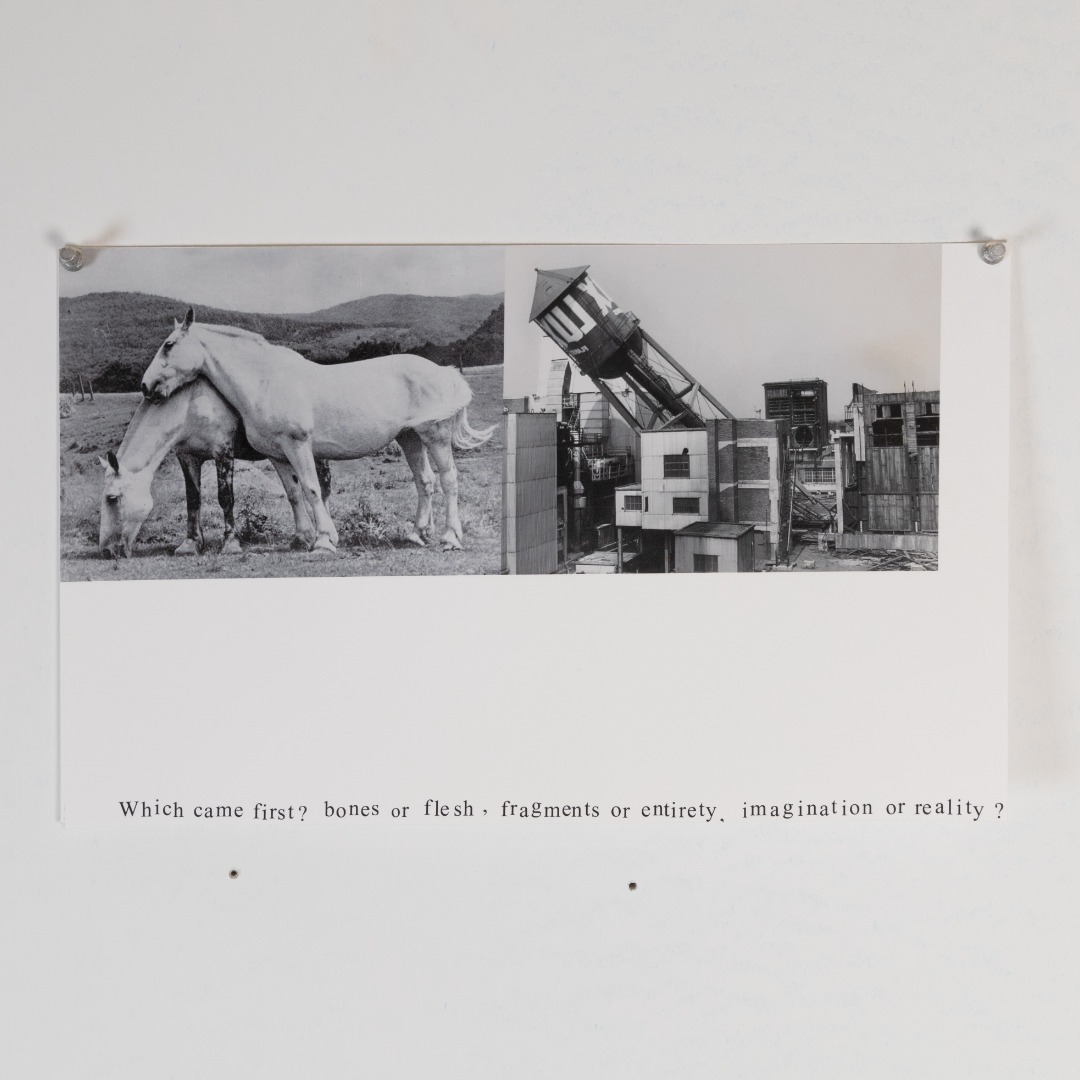
Poem, Bruised
Alabaster, marble, UV print
18 in x 48 in x 3/4 in

Detail of Poem, Bruised

The Moment Has Passed
Stone dust and chunks
Variable dimension

Sisyphus, where is the end of eternity?
Video on hologram projector
Variable dimension

Fragments in Flux
Book
8.5 in x 11 in

Carousel #1
Slides, slide projector
Variable dimension

Leaning
Inkjet print on paper
8 in x 13 in
I am a conceptual artist working with sculpture, film, writing, and their interdisciplinary potential. Spurred by my family archive of a ruined house, I proposed this research-oriented project, tackling the real estate market and housing problem in China and the weaved complex of love, debt, and governance. In my work, signifiers that point to the invention, reproduction, and appropriation of symbols create the opportunity to visualize complex power dynamics and pose questions about the existing conceptions of order. The iteration of the horse, which can be traced from Apollo’s Chariot statue and westernized models displayed in the gentrified residential area, implies that companies obscure the ideological functioning of images by imposing illegitimate classifications of value.
The installation consists of an animated 3D film playing on a hologram projector, a series of stone sculptures with both hand-carved text and UV printed images, and improvisational drawings on the ground with dust and chunks of stone. The grey and white grids, associated with the transparent layer in computer graphic programs, are readopted as brushstrokes. The pseudo-proposition of presence in absence echoes the abstraction of value that makes the real unreal, criticizing governments and capitalists selling living essentials as an investment and turning use value into exchange value. Stone slabs, digital prints, and the fan projector suggest the metaphor of flatness in relation to actions of eviction, demolition, and landfill. Wordplay, diagrams, and tampered images are excerpts of Land Administration Law in China and construction drawings of my family’s first self-built house, indicating the power dynamic between state ideology and individual history. The interplay of labor-intensive making and computer-programmed machining speaks to the core question: who empowers whom?